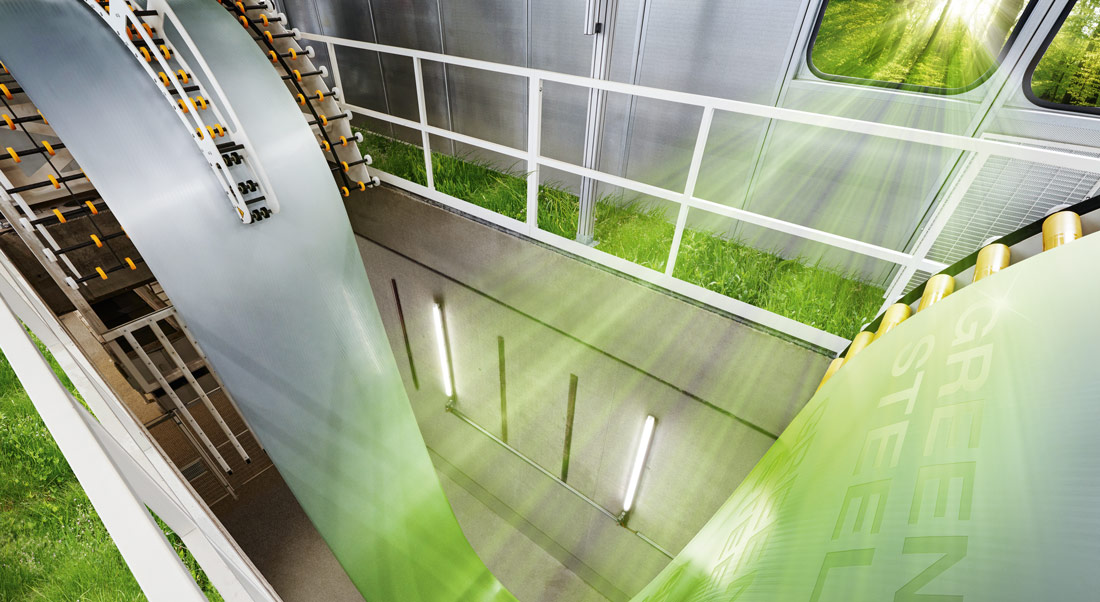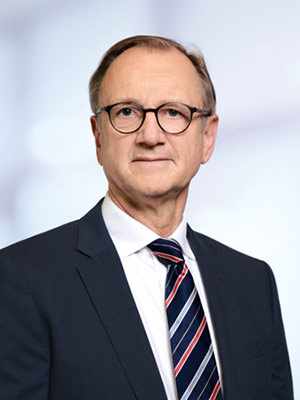Text Markus Huneke ––– Photography
A carbon-free economy – it sounds so simple, but for most sectors, especially those involving sophisticated industrial production, it has far-reaching consequences that are still hard to fully grasp at present. The main focus is on two industries – car manufacturing and steel production – together with all their upstream and downstream supply and processing stages.
PROCESSORS WILL HAVE LOTS OF QUESTIONS
“Naturally, we can’t yet say how the steel industry’s switch to green steel will actually take shape, but we’re taking the transformation very seriously and putting out feelers,” says Sonst. “It’s not a publicity stunt for us. We’re actually discussing the possibilities with steel producers,” he emphasises. While automotive manufacturers are battling to completely eliminate the emissions associated with their vehicles during production and subsequent use by customers,steel manufacturers are faced with the task of turning the well-established, sophisticated process of steel production on its head. This is a big economic risk, with no guarantee of success.
Recent announcements by virtually all major European car manufacturers that they are intending to use green steel in the future show how closely intertwined the two industries are. Daimler, for instance, is looking to start switching its vehicles to green steel from 2025 onwards. In parallel to this, all Europe’s big steelmakers are investing millions in projects aimed at achieving carbon-free steel production.
WHAT GREEN STEELS ARE ACTUALLY AVAILABLE?
Although it’s still early days for green steel technology and too soon to confirm that it can be implemented efficiently on a large scale, progress is slowly but surely being made. The challenges aren’t restricted to the start and end of the steel process chain, that is to say production and use. Switching the parts of the value chain in between to green steel technology is also a huge task.
For example, which steel grades will actually be available with the necessary green credentials and when, which manufacturers will be able to supply which grades and, most importantly of all, how much will they cost? Ultimately, whether or not a material succeeds on the market is down to the range available and the associated terms and conditions. Sonst considers it vital to help customers and partners find out more. As an independent steel service centre that has been supplying materials to the automotive industry for many years, Stahlo is in an ideal position to obtain the necessary knowledge quickly.
“Our excellent, well-established contacts with both manufacturers and users of steel mean we can view the issue of green steel from several different perspectives and build up outstanding expertise,” he says.
FIRST GREEN COILS ON DEMAND
That’s not just PR talk. Stahlo has already made a start and recently ordered its first coils from low-carbon production. “For small quantities, it’s possible to reduce CO2 emissions by almost 75 per cent compared with the conventional blast furnace route. Although we can’t get a standard range delivered from stock yet, we’re focusing on what we can obtain and who needs what,”, explains Sonst.
WHAT EXACTLY IS GREEN STEEL?
Looking into the issue of green steel in more detail raises quite a few questions. What does buying green steel actually mean in concrete terms? Is steel only green if it’s manufactured on a completely emission-free basis? Or does steel produced with reduced emissions also count as green? These questions are by no means trivial. After all, steel users will have to reliably assess whether any – or which – green steel meets its specific requirements, in both technical and regulatory terms. This calls for appropriate expertise.
“Our customers benefit greatly from our independent steel service centre, which isn’t tied to specific supply sources,” emphasises Sonst. “We keep an eye on all our partners’ big projects, and we’re always able to make comparisons and offer appropriate solutions,” he adds.
To make the whole concept easier for customers to understand, Stahlo classifies the materials in a similar way to the energy label on household appliances. “We can already obtain quantities from various manufacturing processes with different energy consumptions and emissions whenever we want. Our aim is to take this further and become a true network partner, networking people, resources and technologies in a way that will enable us to overcome the major challenges, now and in the future,” concludes Sonst.




